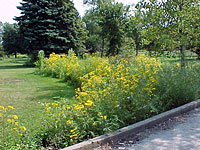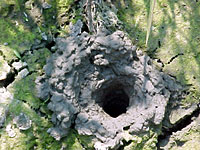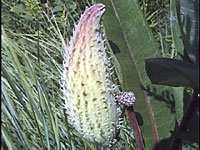

|
Outcome
The plantings in upland propagation beds contribute to the ability of the site to enhance water quality by increasing the soil's capacity to infiltrate stormwater and filter sediments and pollutants from runoff prior to discharge to the Middle Fork and Harrier Marsh. The propagation beds produce seeds for future restoration needs and preserve local genotypes while also establishing habitat for butterflies, insects, birds, and small mammals. The beds function as a demonstration and scientific study site and set an example for native landscaping as an alternative to traditional lawn maintenance and gardening. |
 Click image for larger version and photo data
Click image for larger version and photo data
|
The colorful September wildflowers along the uplands provide a striking contrast to traditional landscaping. |
 Click image for larger version and photo data
Click image for larger version and photo data
|
The hydric soil along the buffer uplands of the stream corridor provide habitat for the prairie tower crayfish whose hole is pictured here. |
 Click image for larger version and photo data
Click image for larger version and photo data
|
This seed pod of marsh milkweed (Asclepias incarnata) is producing seed for the next growing season.
Return to Upland Restoration Buffer |